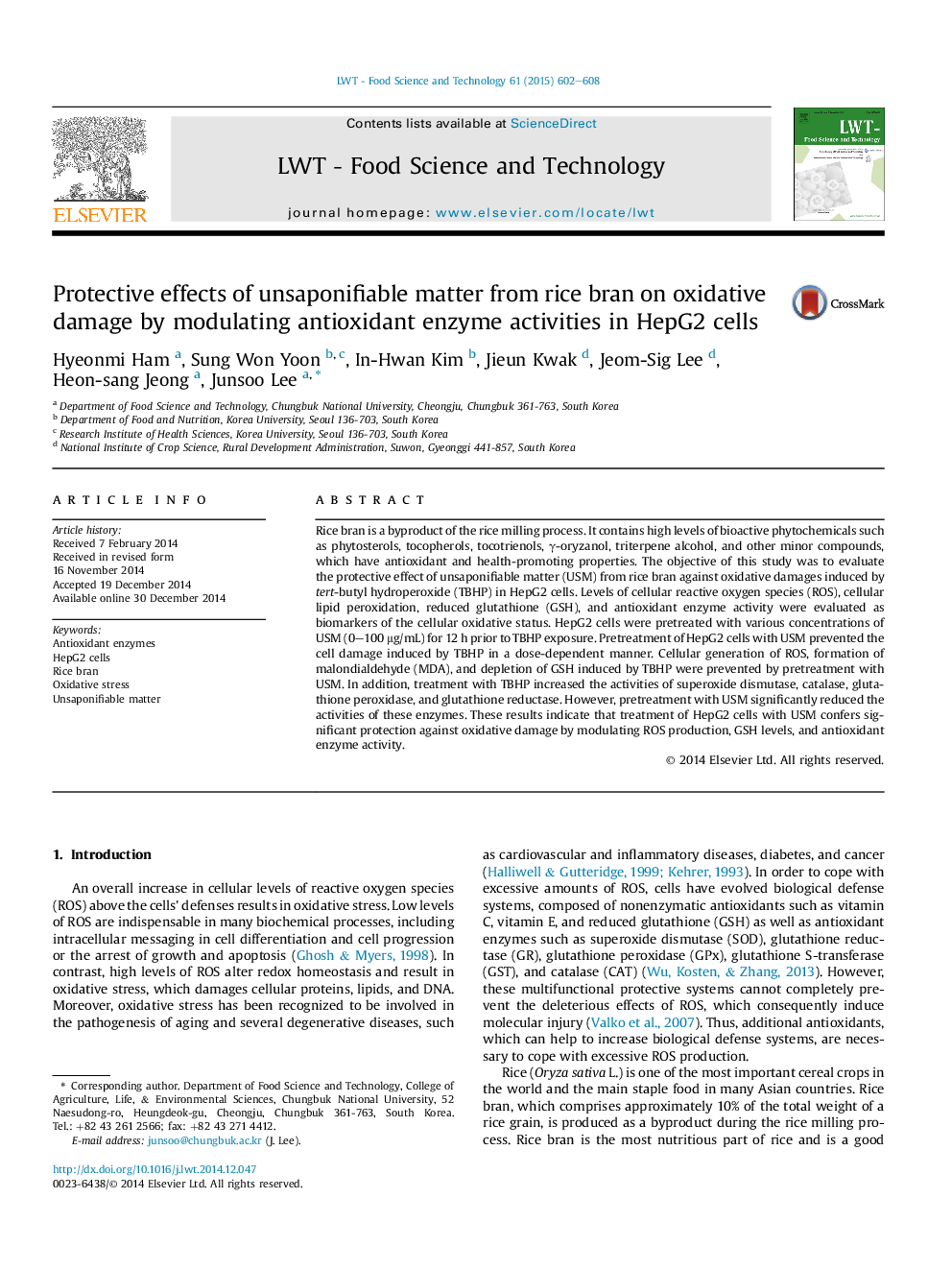| Article ID | Journal | Published Year | Pages | File Type |
|---|---|---|---|---|
| 6401224 | LWT - Food Science and Technology | 2015 | 7 Pages |
Abstract
Rice bran is a byproduct of the rice milling process. It contains high levels of bioactive phytochemicals such as phytosterols, tocopherols, tocotrienols, γ-oryzanol, triterpene alcohol, and other minor compounds, which have antioxidant and health-promoting properties. The objective of this study was to evaluate the protective effect of unsaponifiable matter (USM) from rice bran against oxidative damages induced by tert-butyl hydroperoxide (TBHP) in HepG2 cells. Levels of cellular reactive oxygen species (ROS), cellular lipid peroxidation, reduced glutathione (GSH), and antioxidant enzyme activity were evaluated as biomarkers of the cellular oxidative status. HepG2 cells were pretreated with various concentrations of USM (0-100 μg/mL) for 12 h prior to TBHP exposure. Pretreatment of HepG2 cells with USM prevented the cell damage induced by TBHP in a dose-dependent manner. Cellular generation of ROS, formation of malondialdehyde (MDA), and depletion of GSH induced by TBHP were prevented by pretreatment with USM. In addition, treatment with TBHP increased the activities of superoxide dismutase, catalase, glutathione peroxidase, and glutathione reductase. However, pretreatment with USM significantly reduced the activities of these enzymes. These results indicate that treatment of HepG2 cells with USM confers significant protection against oxidative damage by modulating ROS production, GSH levels, and antioxidant enzyme activity.
Related Topics
Life Sciences
Agricultural and Biological Sciences
Food Science
Authors
Hyeonmi Ham, Sung Won Yoon, In-Hwan Kim, Jieun Kwak, Jeom-Sig Lee, Heon-sang Jeong, Junsoo Lee,
